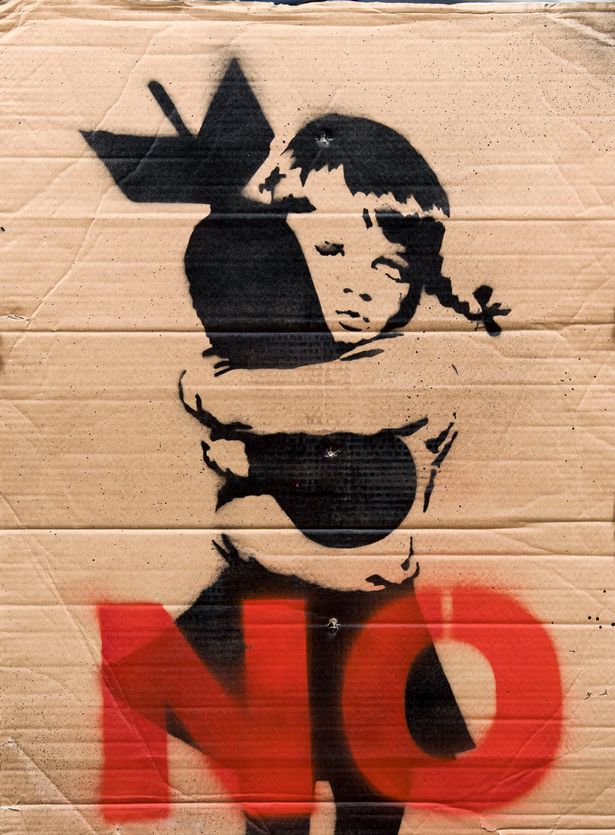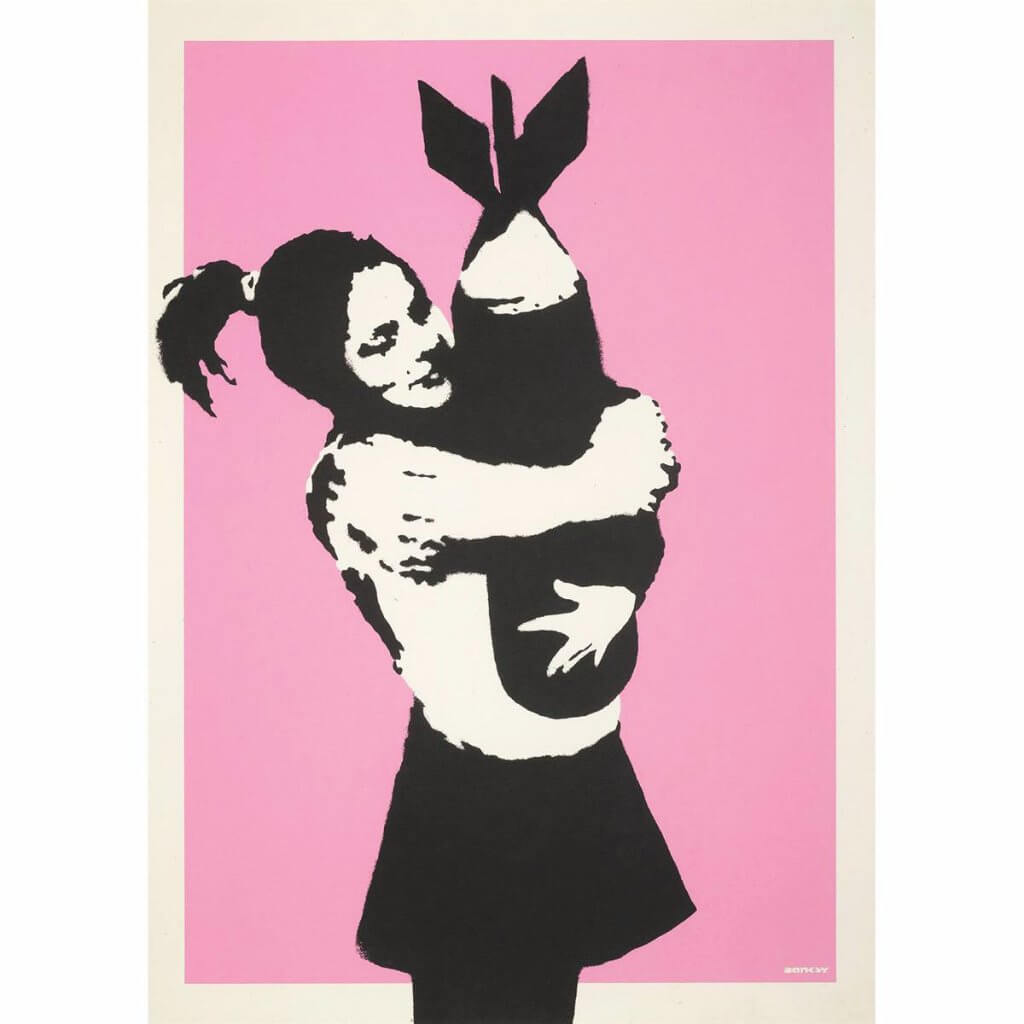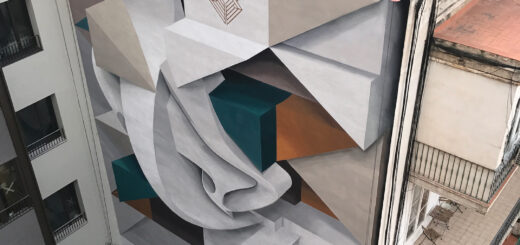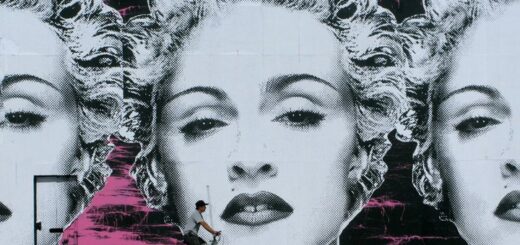The meaning behind Banksy’s ‘Bomb Love’ – Explained
Banksy‘s Bomb Love (Bomb Hugger or Bomb Girl) is a well-known and iconic piece of street art that continues to captivate audiences worldwide. It portrays a young girl lovingly embracing a bomb, effectively highlighting the jarring contrast between innocence and violence in our society. This artwork serves as an invitation to viewers to reflect on the impact of war and the role of love in overcoming destruction.
Banksy created a few originals based on this iconic stencil at the Existencilism exhibition in Los Angeles 2002. The black and white stencil first appeared in east London in 2001, in Bristol, and then in Brighton in 2003, and it has since become one of the most sought-after motifs among collectors and art enthusiasts worldwide.
Interestingly, Banksy also used this image for a series of placards during a protest against the Iraq War in 2003. Most placards were discarded after the event, but one was sold in 2017 for £10,000 by Rowleys in Suffolk.
Through his anonymous activism, Banksy aims to raise awareness and inspire change. He once mentioned, “I like to think I have the guts to stand up anonymously in a Western democracy and call for things no one else believes in – like peace and justice and freedom.” (Wall and Piece Book pg 24-25)
The Bomb Love stencil stands as a testament to Banksy’s mission and serves as a reminder of the power of art to provoke thought and inspire action.

Amidst the UK protests against the Iraq invasion, Banksy unveiled a screen print titled ‘Bomb Love’ featuring a vibrant pink backdrop reminiscent of bubble gum. The prints were released through Pictures on Walls, Banksy’s UK-based printing house. A total of 750 prints were made available, comprising 150 signed copies and 600 unsigned ones.

Editions: 150 signed, 600 unsigned
Bomb Love, Bomb Hugger 2003



